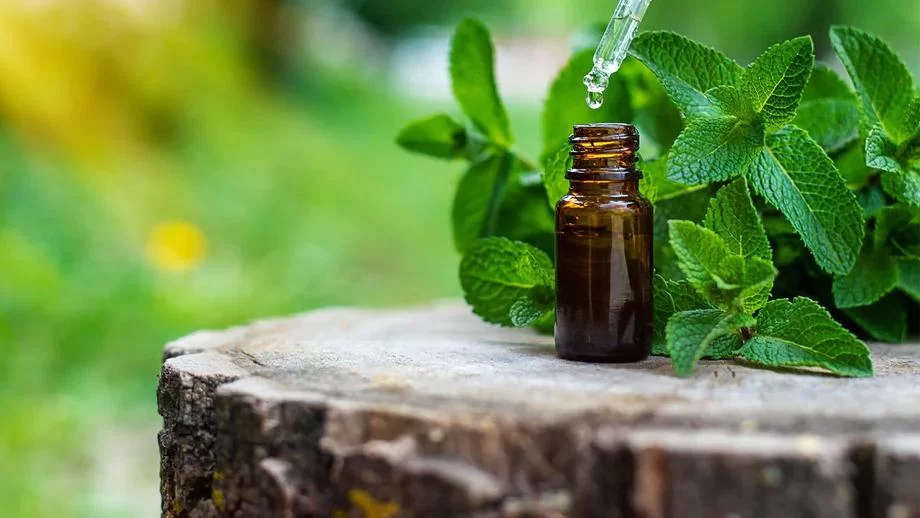- Understanding Peppermint Oil for Skin Cooling
- How Peppermint Oil Cools and Soothes Skin
- Practical Uses of Peppermint Oil in Skincare
- Real-Life Examples and User Experiences
- Tips for Safe and Effective Use
- Where to Find Quality Peppermint Oil Products
1. Understanding Peppermint Oil for Skin Cooling
Peppermint oil is extracted from the leaves of the peppermint plant and is widely celebrated for its refreshing and invigorating aroma. But beyond its pleasant scent, peppermint oil is highly regarded for its skin-cooling properties. When applied topically, it creates a sensation of coolness that can help soothe irritation, reduce redness, and calm inflamed skin.
This cooling effect is mainly attributed to menthol, a natural compound in peppermint oil that triggers the skin’s cold-sensitive receptors. Unlike simply lowering skin temperature, menthol tricks your skin into feeling cooler, which can be especially beneficial during hot weather or after sun exposure.
Understanding the natural mechanisms of peppermint oil’s cooling action sets the foundation for incorporating it into your skincare routine effectively.
1.1 Why Choose Peppermint Oil for Cooling?
Natural skin cooling remedies are increasingly popular due to concerns about synthetic ingredients. Peppermint oil stands out as an excellent option because it combines cooling benefits with antiseptic and anti-inflammatory properties. This makes it ideal not just for comfort but also for improving skin health.
2. How Peppermint Oil Cools and Soothes Skin
When peppermint oil is applied to the skin, menthol activates cold-sensitive TRPM8 receptors in the nerve endings. This stimulation creates a cooling sensation without actually lowering the skin’s temperature. This unique effect helps provide immediate relief from heat, itching, or discomfort caused by sunburns, insect bites, or allergic reactions.
Additionally, peppermint oil’s anti-inflammatory properties help reduce swelling and redness. This dual action—cooling combined with soothing—makes peppermint oil a powerful natural ingredient for calming irritated skin.
2.1 The Science Behind Menthol’s Effect
Menthol’s interaction with TRPM8 receptors is well-documented in scientific studies. These receptors are specialized for detecting cold stimuli. By activating them, menthol creates a perception of coldness, which is why peppermint oil is often included in topical creams and gels designed for muscle pain relief and skin cooling.
This scientific backing adds credibility and confidence in peppermint oil’s effectiveness as a skincare ingredient.
3. Practical Uses of Peppermint Oil in Skincare
Peppermint oil can be a versatile addition to many skincare routines. Its cooling and soothing properties make it suitable for various skin concerns, especially those related to heat and irritation.
3.1 Cooling After Sun Exposure
Many people experience discomfort after prolonged sun exposure. Peppermint oil, when diluted properly, can be applied to sunburned skin to relieve heat and redness. The cooling sensation helps reduce the urge to scratch or rub irritated areas, promoting faster healing.
3.2 Soothing Insect Bites and Skin Irritations
Insect bites often cause itching and swelling. Peppermint oil’s anti-inflammatory effects, coupled with its cooling sensation, provide immediate relief. For example, a diluted peppermint oil blend can calm mosquito bites effectively, preventing excessive scratching and further irritation.
3.3 Incorporating Peppermint Oil in Daily Skincare
Some users add a few drops of peppermint oil to their moisturizers or facial mists for a refreshing boost. This practice not only invigorates the skin but can also help reduce excess oiliness, making it popular among those with oily or combination skin.
4. Real-Life Examples and User Experiences
Consider the story of Laura, an outdoor enthusiast who struggled with skin discomfort after hiking in hot weather. She started using peppermint oil diluted in a gentle carrier oil post-hike. The immediate cooling effect soothed her sun-exposed skin and reduced redness remarkably. Laura found this natural approach more satisfying than over-the-counter gels, appreciating the invigorating scent as well.
Another example comes from a skincare blogger who shared how peppermint oil helped calm her occasional skin flare-ups caused by irritation. She mixed peppermint oil into a homemade aloe vera gel and noted faster relief and reduced swelling.
These stories highlight how peppermint oil can be both practical and enjoyable in real-life skincare applications.
5. Tips for Safe and Effective Use
While peppermint oil offers numerous benefits, it is essential to use it correctly to avoid irritation or allergic reactions. Here are some expert tips:
5.1 Always Dilute Peppermint Oil
Pure peppermint oil is highly concentrated and can cause skin irritation if applied directly. Diluting it with a carrier oil such as jojoba, coconut, or almond oil is crucial. A common dilution ratio is 1-2 drops of peppermint oil per teaspoon of carrier oil.
5.2 Perform a Patch Test
Before applying peppermint oil widely, test a small amount on the inside of your wrist or elbow. Wait 24 hours to ensure no adverse reaction occurs.
5.3 Avoid Sensitive Areas
Keep peppermint oil away from eyes, mucous membranes, and broken skin to prevent irritation.
6. Where to Find Quality Peppermint Oil Products
If you’re interested in incorporating peppermint oil for skin cooling into your routine, sourcing high-quality products is key. Look for 100% pure, therapeutic-grade peppermint oil that guarantees potency and safety.
For those seeking trusted recommendations and a curated selection, Scent Snob offers expert advice and a wide range of premium peppermint oil products. Whether you want standalone essential oils, skincare blends, or soothing lotions, their selection helps you find the best fit for your needs.
Using reputable sources ensures that you enjoy peppermint oil’s benefits without compromise, making your skincare experience both effective and pleasurable.


0 comments